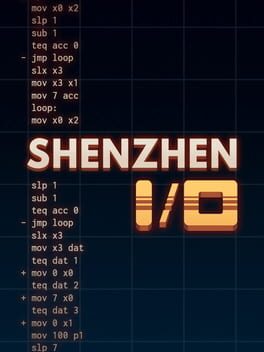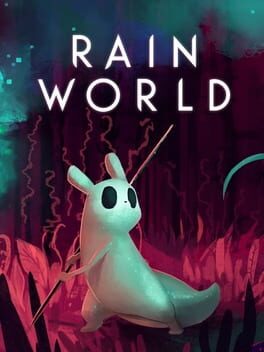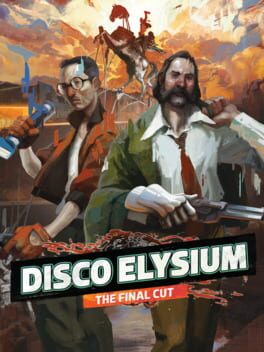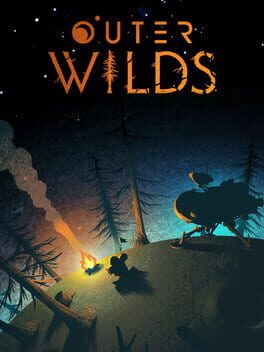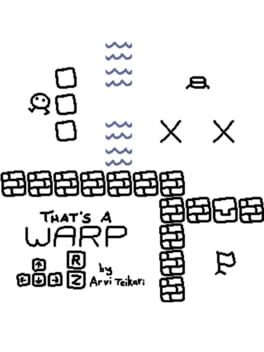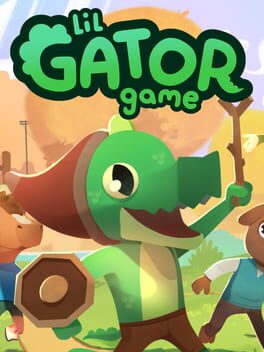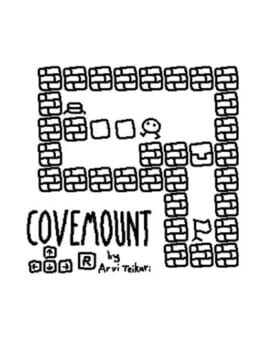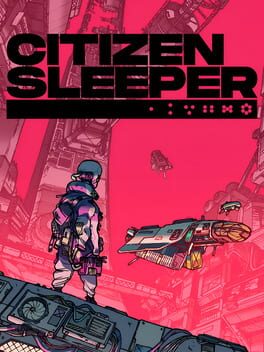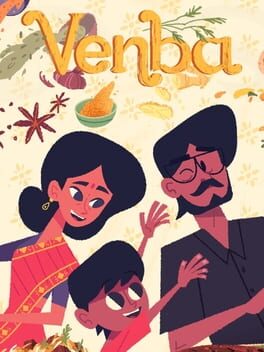IceNinja
Bio
My greatest love in life is games. I'm constantly playing, writing about and making them.
My greatest love in life is games. I'm constantly playing, writing about and making them.
Badges

GOTY '23
Participated in the 2023 Game of the Year Event

Gamer
Played 250+ games

Liked
Gained 10+ total review likes

2 Years of Service
Being part of the Backloggd community for 2 years

GOTY '22
Participated in the 2022 Game of the Year Event

Popular
Gained 15+ followers

Best Friends
Become mutual friends with at least 3 others

Noticed
Gained 3+ followers

GOTY '21
Participated in the 2021 Game of the Year Event

N00b
Played 100+ games
Favorite Games
295
Total Games Played
010
Played in 2024
000
Games Backloggd
Recently Played See More
Recently Reviewed See More
This review contains spoilers
[My thoughts on hempuli's covemount-like saga are from watching a friend playthrough not an experience of playing myself]
I adore the mechanic of this one. it's fascinating to wrap your head around it.
The early setup of tricking you into thinking you need portals to warp is hilarious.
The idea of changing warp pathing by pushing sokoban boxes is so cool. I like a lot of the puzzles that arise from it.
This game has an interesting progression where your sense of mechanical freedom advances as you beat levels and understand the nuance of warping. Then it finishes by trapping you into a limited world where you can barely warp.
The more intuitive arc would be the other-way around, but I'm pretty fond of the way this game does this.
I adore the mechanic of this one. it's fascinating to wrap your head around it.
The early setup of tricking you into thinking you need portals to warp is hilarious.
The idea of changing warp pathing by pushing sokoban boxes is so cool. I like a lot of the puzzles that arise from it.
This game has an interesting progression where your sense of mechanical freedom advances as you beat levels and understand the nuance of warping. Then it finishes by trapping you into a limited world where you can barely warp.
The more intuitive arc would be the other-way around, but I'm pretty fond of the way this game does this.
This review contains spoilers
Lil Gator Game? More like AWESOME Gator Game!
Play this! I love pretty much everything in this game...wow what a great experience! It's definitely my favorite in the genre. {that is the genre of wholesome adventure games where you wander around a cute world and make friends with everybody you meet (by helping them)}
Every part of Lil Gator Game commits to being wonderfully playful, it's all is overflowing with creativity and charm.
First, we should appreciate how this lil gator moves around. Those movement animations are adorable. The breath of the wild impression here is excellent (it's great to inhabit a world where paragliding is a standard mechanic). The whole setup of the game makes these homage mechanics feel like the children's tradition of stealing (rather than the game design tradition of stealing).
Uniquely among BOTW descendants that I've played, Lil Gator Game also takes shield surfing. I'm completely on board for that- especially since Lil Gator Game makes it even cooler. The "shields" are less fragile, more bouncy and incredibly expressive.
They've also introduced an ESSENTIAL innovation to the formula: the ability to embrace Ragdoll physics on command. This was absolutely hilarious the first time- and it stayed funny throughout the whole game. I can't believe that I actually let crumpling become a natural part of my traversal. I love it so much.
Shoutout to Rowan's placebo bracelets LMAO. I happened to play most of the game with only 1 bracelet, since I didn't see Rowan when I initially went to the great tree and water fountain. {add this to the stack of evidence that gamers don't look up}. Eventually unlocking infinite stamina is an excellent gag and appreciated quality of life for my final hour with the game.
Then of course, there's the delightful world. The nature goes hard- there's great use of elevation and trees, the water looks very nice, and I adore the autumn aesthetic. Even better than all that is the cardboard props that are destined to be consumed by the relentless destructive force of a certain heroic gator. These work very well, both thematically and as a good way to fill the world. The scrap currency is used effectively, and importantly it never feels like something you are forced to gather more of. The visceral joy of smashing props and neat customization unlocks stay exciting for the whole game.
My favorite part of the park is the playground you and your friends develop over the course of the game. It's quite satisfying to see the transformations and amusing to imagine the untold logistical feat of this construction. I'm quite fond of the idea of spending friends for each command center project- it's a solid way to reify your accumulation of playmates. It feels very fitting that the other children you recruit are only actually interested in helping with one project. One of my favorite touches is the way most of the completed NPCS exists in a quantum superposition where they are both in their island location and have joined you in the park. You get to experience making the hub area more lively without compromising the liveliness of the island.
The tasks and interactions with NPCS are definitely the highlight of the game. Dialog is frequently funny, absurdity is used to great effect, and they packed a whole lot of distinct characters into this island. The humor hits pretty consistently and there's some parts that I'm still laughing with as I write this review. I also love the nature of the things you're doing here. It's cool to get such a wide tour of takes on play. Furthermore, I have a deep respect for how much this game advocates simply talking things out with people. Shoutout to Duke and the Saint Hogarth trio {I'm especially fond of how their summer projects are actually just expressions of passions.}
Every time the gator pulls out their phone is gold. My favorite scene in the game is the group chat trying to get enough combined money to buy ice cream.
It's funny how i didn't suspect that I had started on this game's equivalent of the great plateau, the adventure actually starting with tom's text message somehow caught me off guard. Speaking of surprises, I was expecting this to be a short 2 hour game and got a nice solid 5 hours instead. Sweet!
I love the narrative arc with lil gator and big sis. The core conflict is well executed, and the reveal that she is studying to be a game developer is superb. The still-life memories scattered across the island are quite effective. The flashback traversal is a much more interesting finale than i was expecting.
I have a strong appreciation for what they set out to do here. The name Lil Gator Game is quite clever, it's very marketable but also a cheeky way for the game to wear its intent on its sleeve. I really like the way the entire scenario is framed as a game that characters are actively roleplaying.
There are two things that specifically elevate Lil Gator Game for me. {Leaving me with more than just "wow that was a great experience"}
1. The focus on play, games and what it means for people to breathe life into them. {Specifically resonant because I'm a game developer}
2. The division caused by how Lil Gator and Big Sis fundamentally have a different relationship with time.
It's quite easy for me to relate to not being able to make time for things. Even before I existed in the "world of adults", I've been acutely aware of the opportunity cost inherent to any way I choose to spend my time. I'm quite lucky that my present state as a college student leaves me with a lot of free-time. [I don't need to study and can pretty effectively complete my work in sporadic sprints, so long as I'm not suffering from a bout of executive disfunction. {The kicker is that I'm always drowning in executive disfunction. In fact, I played Lil Gator Game while in a pretty low point of depression related to not being able to get my school-work done.}]
I can also relate to the experience of watching a treasured relationship with an older sibling disintegrates as they struggle to make time for you. I moved to my current city precisely so that I could live with my older brother. Even existing in the same apartment as him wasn't enough to create any consistent bubbles of time where we could interact. We both desperately wanted to spend time with each other, but there was nothing I could do about the stressful job and relationships he was burdened with. Now he's half a country away and I somehow allowed myself to accept the reality where he's not part of my life.
Play this! I love pretty much everything in this game...wow what a great experience! It's definitely my favorite in the genre. {that is the genre of wholesome adventure games where you wander around a cute world and make friends with everybody you meet (by helping them)}
Every part of Lil Gator Game commits to being wonderfully playful, it's all is overflowing with creativity and charm.
First, we should appreciate how this lil gator moves around. Those movement animations are adorable. The breath of the wild impression here is excellent (it's great to inhabit a world where paragliding is a standard mechanic). The whole setup of the game makes these homage mechanics feel like the children's tradition of stealing (rather than the game design tradition of stealing).
Uniquely among BOTW descendants that I've played, Lil Gator Game also takes shield surfing. I'm completely on board for that- especially since Lil Gator Game makes it even cooler. The "shields" are less fragile, more bouncy and incredibly expressive.
They've also introduced an ESSENTIAL innovation to the formula: the ability to embrace Ragdoll physics on command. This was absolutely hilarious the first time- and it stayed funny throughout the whole game. I can't believe that I actually let crumpling become a natural part of my traversal. I love it so much.
Shoutout to Rowan's placebo bracelets LMAO. I happened to play most of the game with only 1 bracelet, since I didn't see Rowan when I initially went to the great tree and water fountain. {add this to the stack of evidence that gamers don't look up}. Eventually unlocking infinite stamina is an excellent gag and appreciated quality of life for my final hour with the game.
Then of course, there's the delightful world. The nature goes hard- there's great use of elevation and trees, the water looks very nice, and I adore the autumn aesthetic. Even better than all that is the cardboard props that are destined to be consumed by the relentless destructive force of a certain heroic gator. These work very well, both thematically and as a good way to fill the world. The scrap currency is used effectively, and importantly it never feels like something you are forced to gather more of. The visceral joy of smashing props and neat customization unlocks stay exciting for the whole game.
My favorite part of the park is the playground you and your friends develop over the course of the game. It's quite satisfying to see the transformations and amusing to imagine the untold logistical feat of this construction. I'm quite fond of the idea of spending friends for each command center project- it's a solid way to reify your accumulation of playmates. It feels very fitting that the other children you recruit are only actually interested in helping with one project. One of my favorite touches is the way most of the completed NPCS exists in a quantum superposition where they are both in their island location and have joined you in the park. You get to experience making the hub area more lively without compromising the liveliness of the island.
The tasks and interactions with NPCS are definitely the highlight of the game. Dialog is frequently funny, absurdity is used to great effect, and they packed a whole lot of distinct characters into this island. The humor hits pretty consistently and there's some parts that I'm still laughing with as I write this review. I also love the nature of the things you're doing here. It's cool to get such a wide tour of takes on play. Furthermore, I have a deep respect for how much this game advocates simply talking things out with people. Shoutout to Duke and the Saint Hogarth trio {I'm especially fond of how their summer projects are actually just expressions of passions.}
Every time the gator pulls out their phone is gold. My favorite scene in the game is the group chat trying to get enough combined money to buy ice cream.
It's funny how i didn't suspect that I had started on this game's equivalent of the great plateau, the adventure actually starting with tom's text message somehow caught me off guard. Speaking of surprises, I was expecting this to be a short 2 hour game and got a nice solid 5 hours instead. Sweet!
I love the narrative arc with lil gator and big sis. The core conflict is well executed, and the reveal that she is studying to be a game developer is superb. The still-life memories scattered across the island are quite effective. The flashback traversal is a much more interesting finale than i was expecting.
I have a strong appreciation for what they set out to do here. The name Lil Gator Game is quite clever, it's very marketable but also a cheeky way for the game to wear its intent on its sleeve. I really like the way the entire scenario is framed as a game that characters are actively roleplaying.
There are two things that specifically elevate Lil Gator Game for me. {Leaving me with more than just "wow that was a great experience"}
1. The focus on play, games and what it means for people to breathe life into them. {Specifically resonant because I'm a game developer}
2. The division caused by how Lil Gator and Big Sis fundamentally have a different relationship with time.
It's quite easy for me to relate to not being able to make time for things. Even before I existed in the "world of adults", I've been acutely aware of the opportunity cost inherent to any way I choose to spend my time. I'm quite lucky that my present state as a college student leaves me with a lot of free-time. [I don't need to study and can pretty effectively complete my work in sporadic sprints, so long as I'm not suffering from a bout of executive disfunction. {The kicker is that I'm always drowning in executive disfunction. In fact, I played Lil Gator Game while in a pretty low point of depression related to not being able to get my school-work done.}]
I can also relate to the experience of watching a treasured relationship with an older sibling disintegrates as they struggle to make time for you. I moved to my current city precisely so that I could live with my older brother. Even existing in the same apartment as him wasn't enough to create any consistent bubbles of time where we could interact. We both desperately wanted to spend time with each other, but there was nothing I could do about the stressful job and relationships he was burdened with. Now he's half a country away and I somehow allowed myself to accept the reality where he's not part of my life.
This is precisely the style of cursed puzzling that I associate with Hempuli. Deep respect to the core mechanic here, it's quite funny (it's fun that I'm part of the thinky puzzle game community such that I am even more in on the joke ).
This is absolutely worth checking out, it's pretty neat
Since I don't vibe that much with sokoban puzzling, I've decided to subject my best friend to hempuli's series of covemount likes as the primary way for me to experience them. It's nice to get to enjoy the gimmick and design without getting frustrated and stuck myself.
This is absolutely worth checking out, it's pretty neat
Since I don't vibe that much with sokoban puzzling, I've decided to subject my best friend to hempuli's series of covemount likes as the primary way for me to experience them. It's nice to get to enjoy the gimmick and design without getting frustrated and stuck myself.
